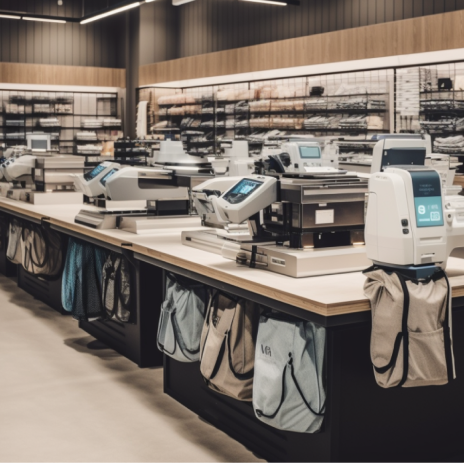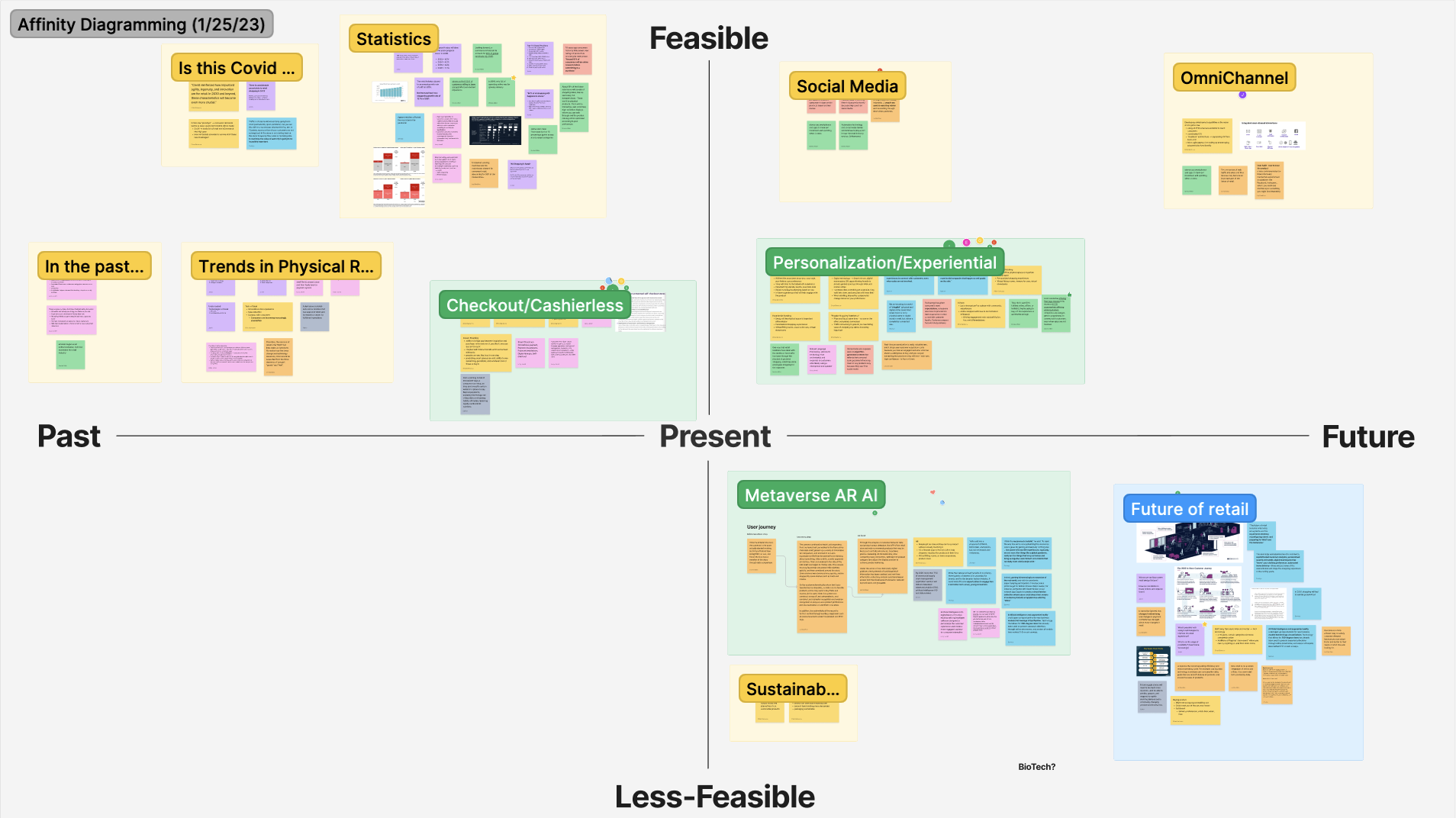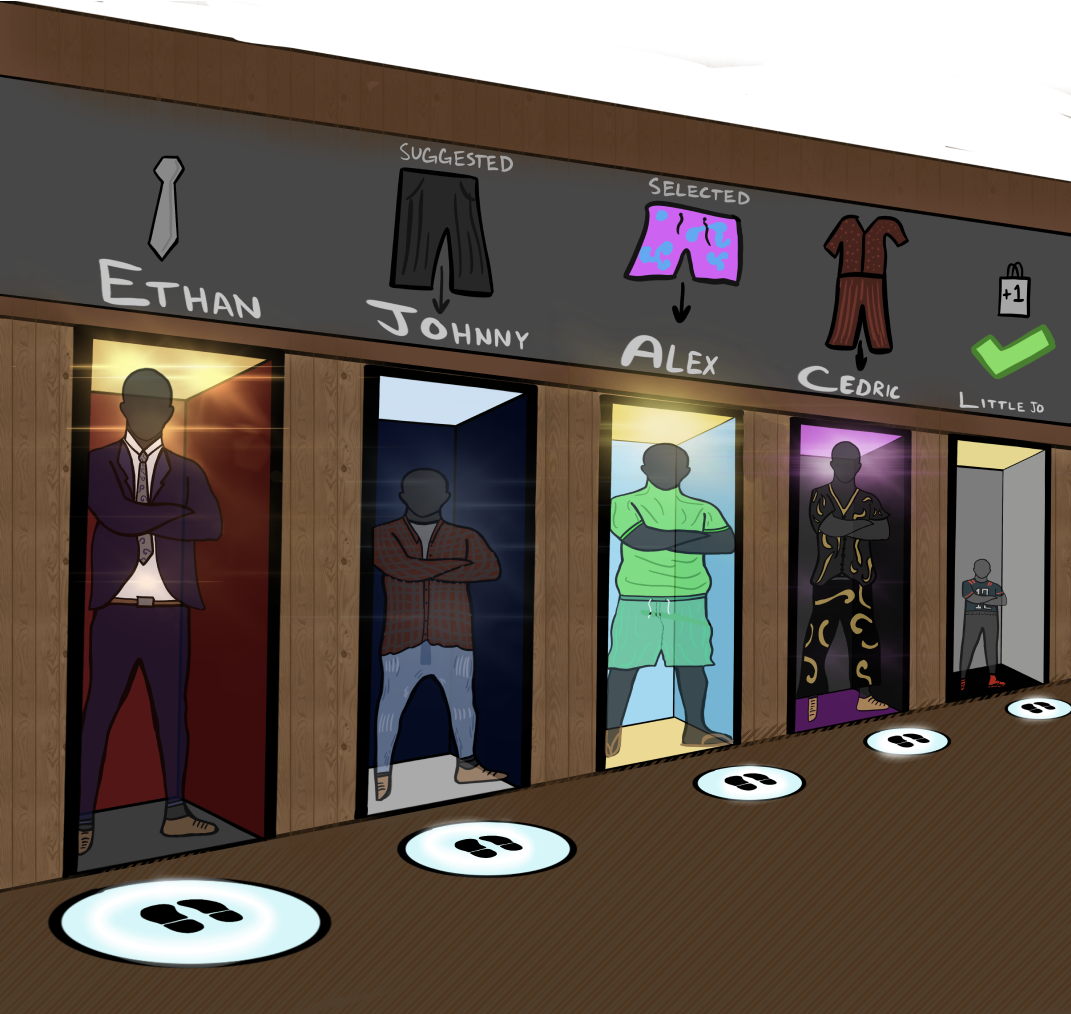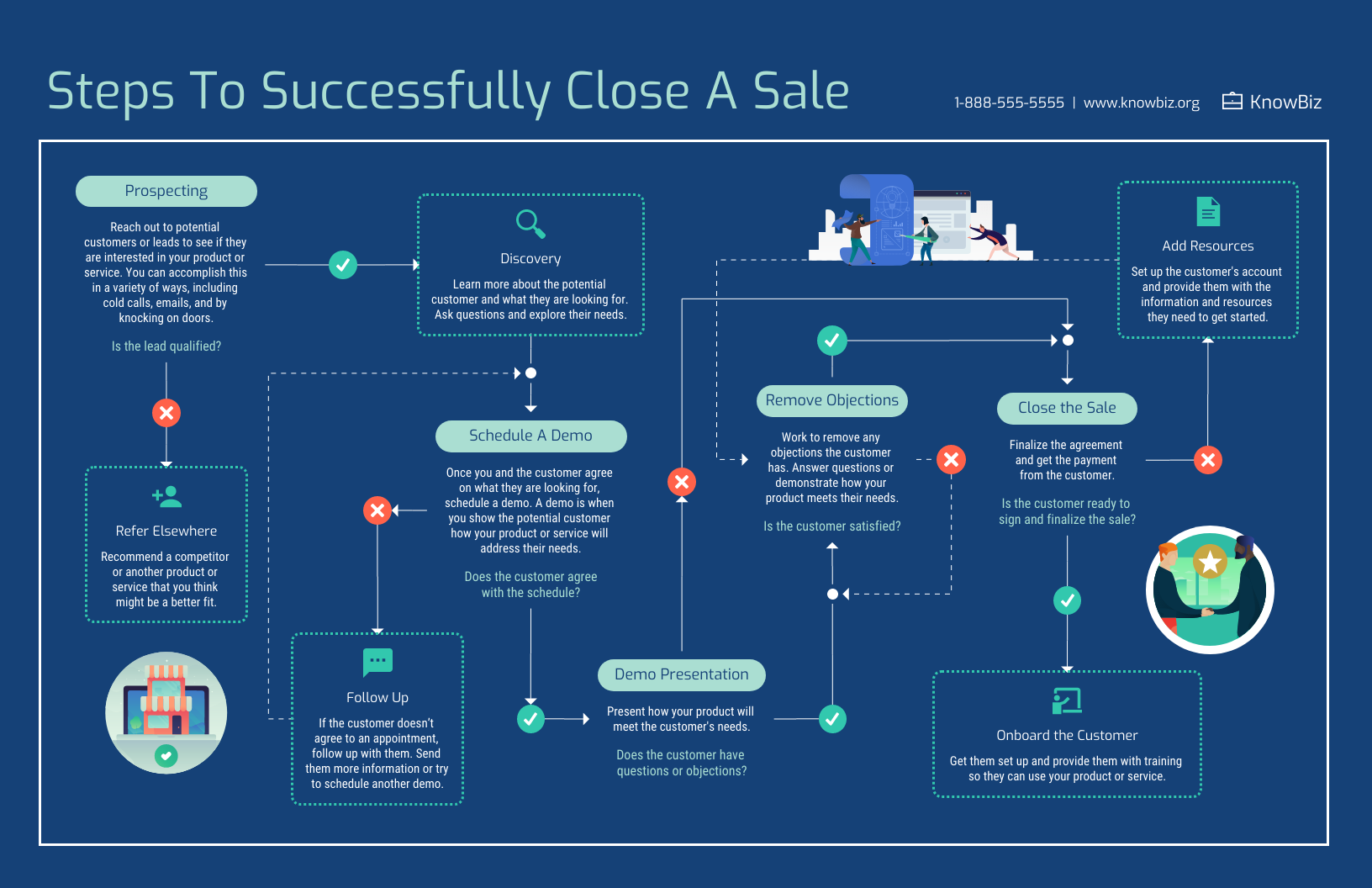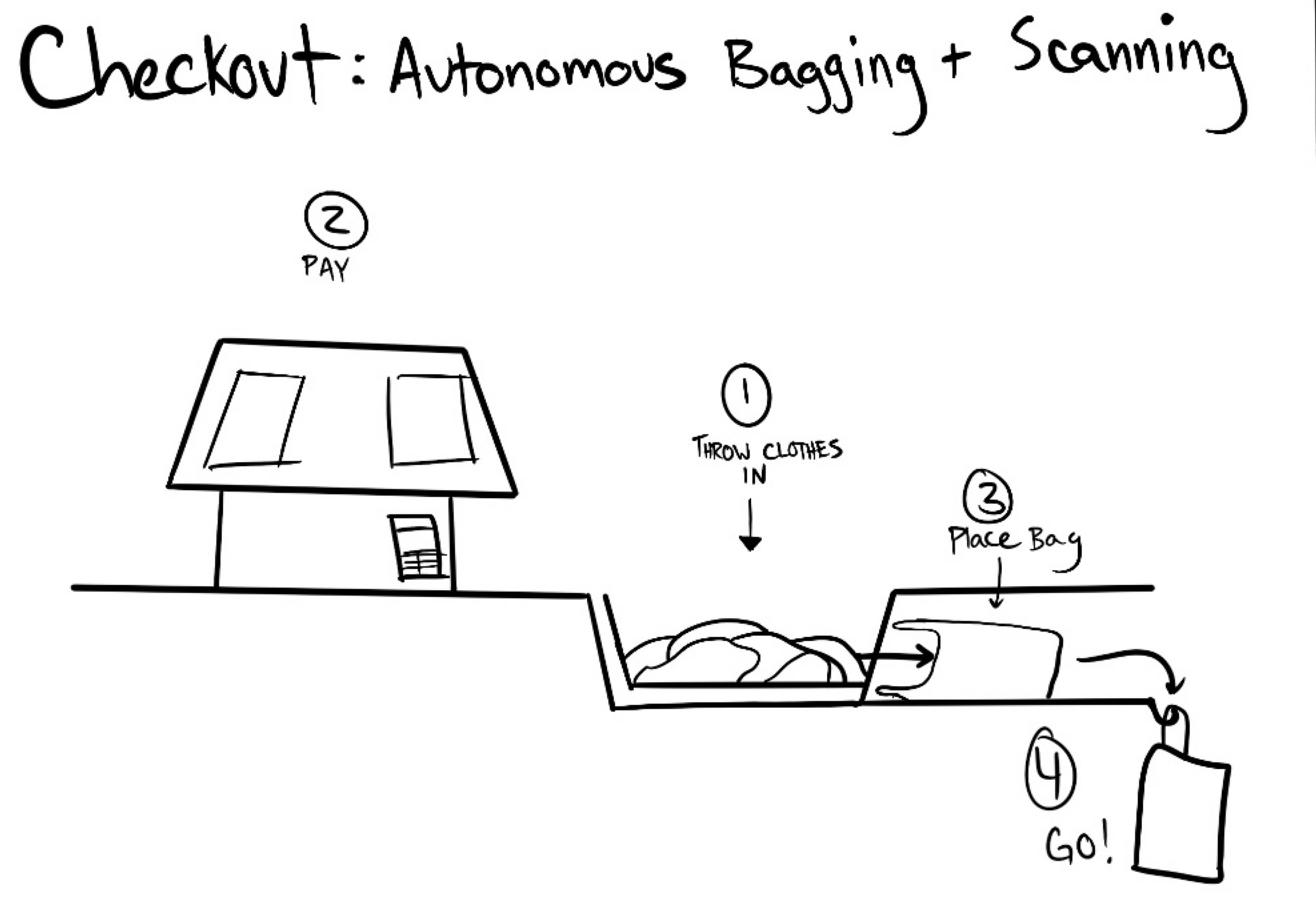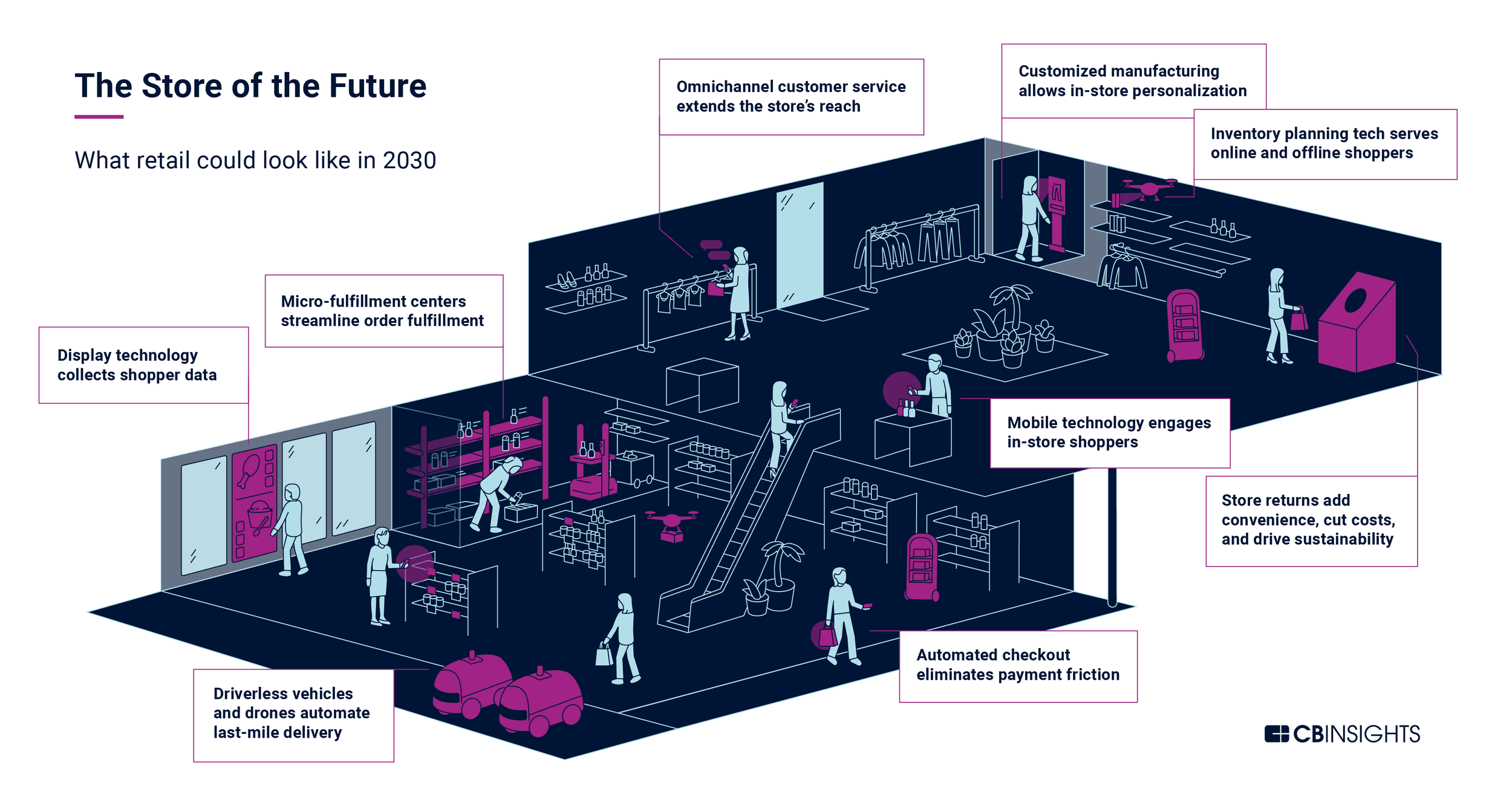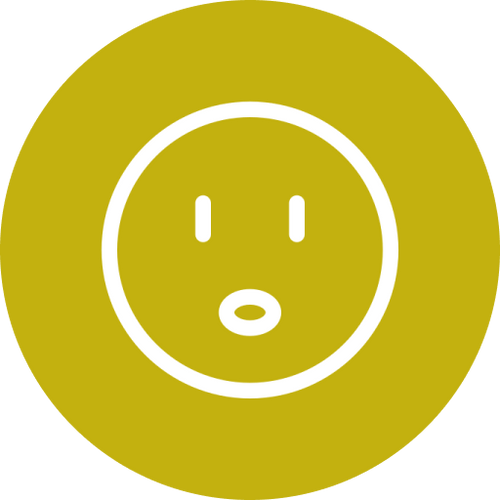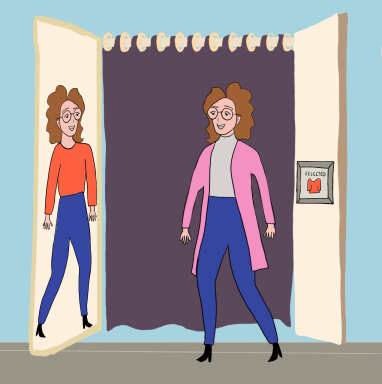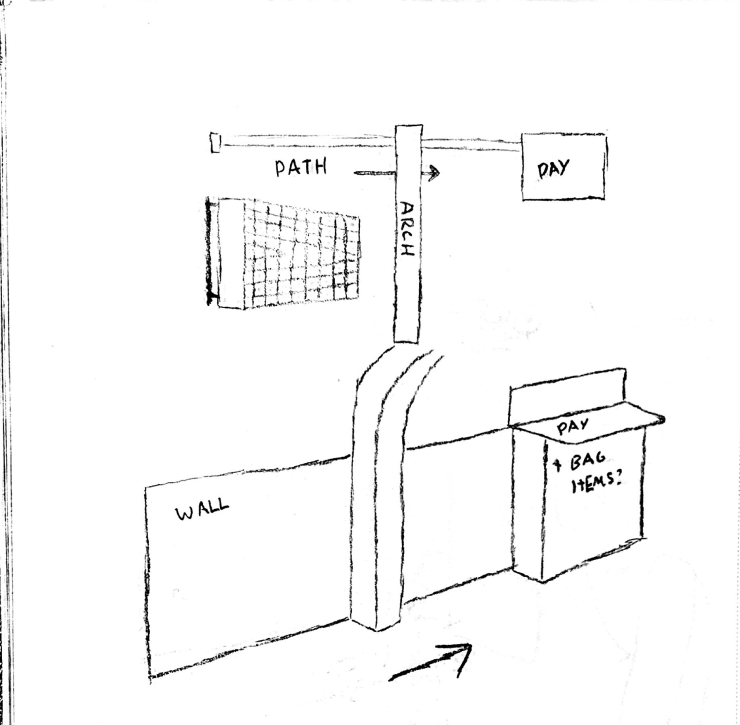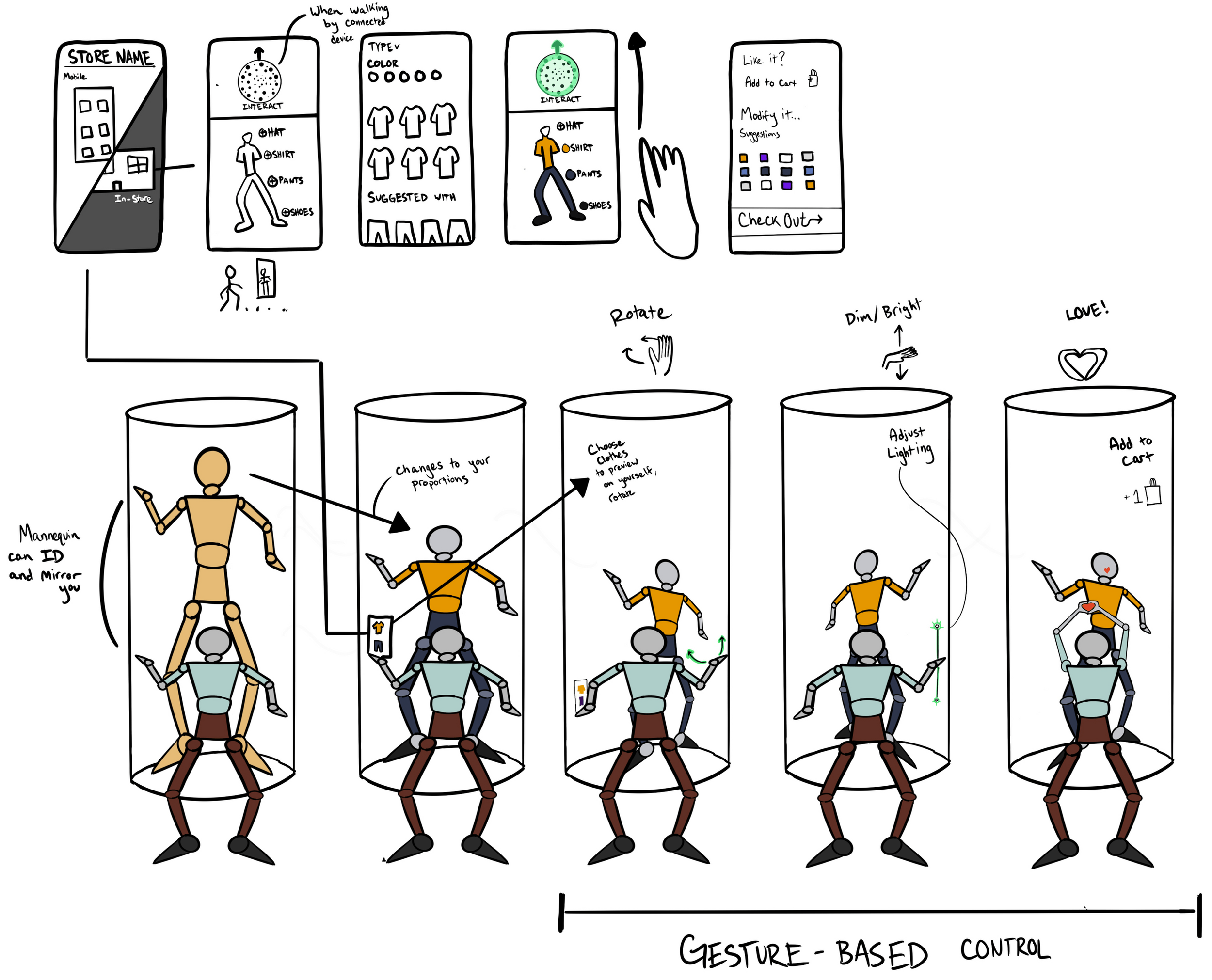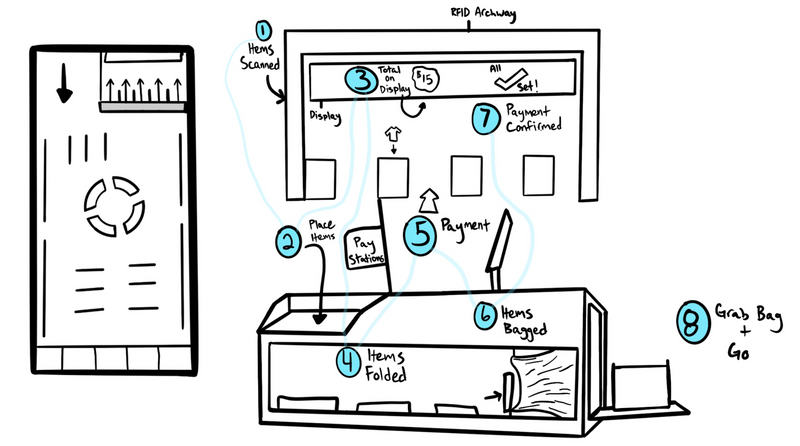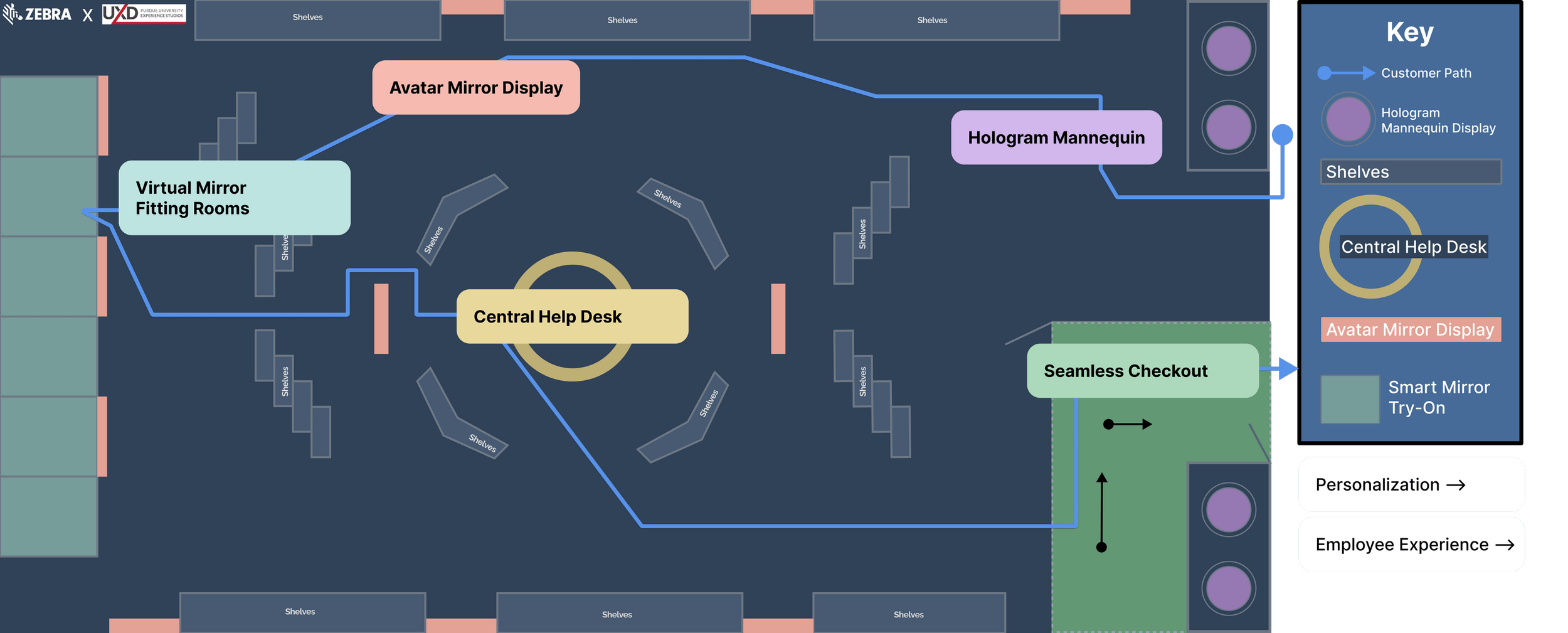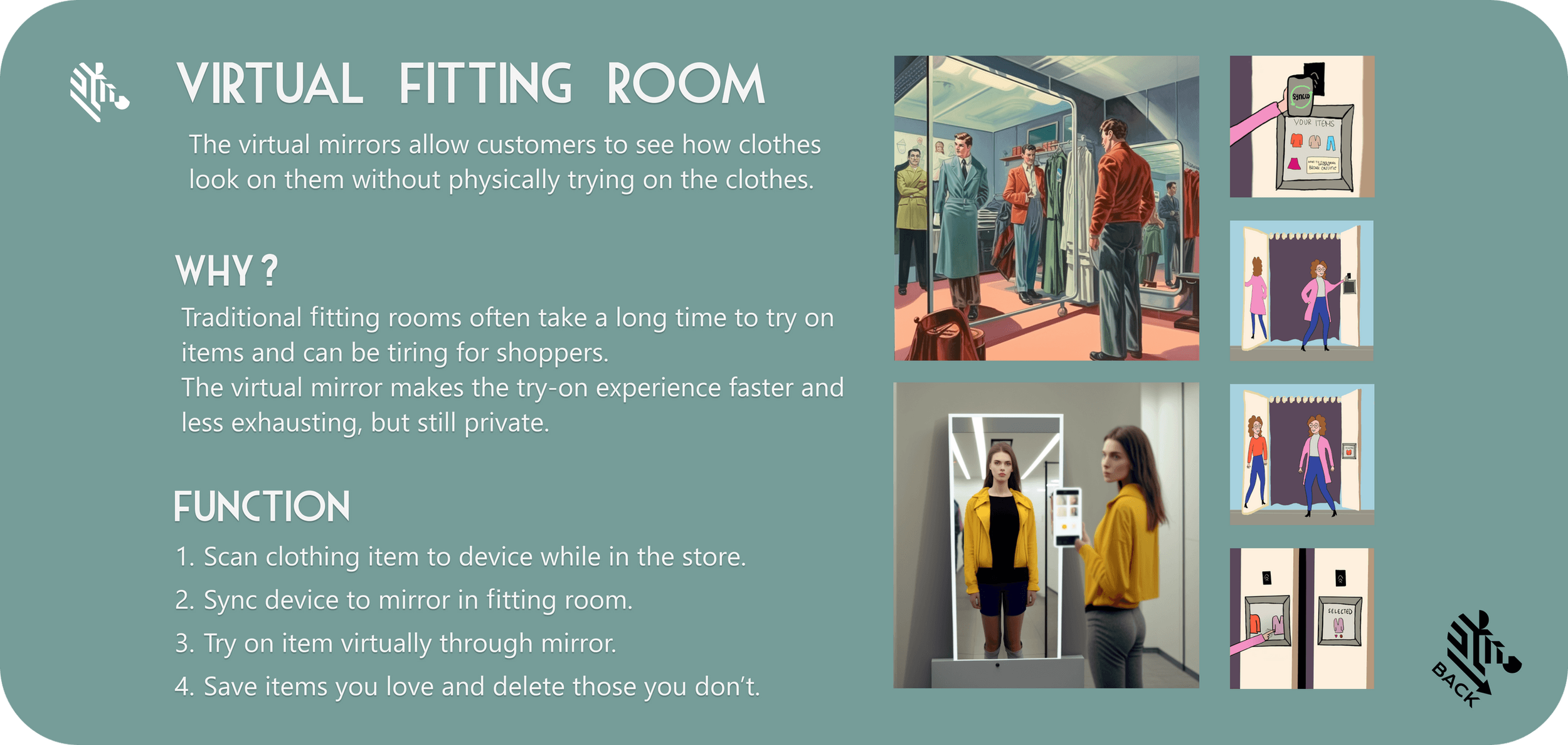Retail Design Fictions
Our design fictions with Zebra Technologies imagine the physical retail space 10-15 years in the future, and how Zebra can prepare with new technologies.
Overview
Retail Observations
Final Designs
Research
Sketches
Overview
The Challenge:
Zebra Technologies is an American mobile computing company that specializes in creating technology used to sense, analyze, and act in real-time, especially in the retail sector. After the impact COVID-19 had on physical retailers, customers are now expecting the same elevated levels of convenience they found while online shopping. Zebra technologies recognizes this, and wants to explore possible retail experiences for the next 10-15 years.
Goals:
Understand the important aspects of physical shopping and determine what shoppers value the most
Research the current level of futuristic technologies in retail spaces today and ideate on future iterations.
Develop and design ideas for Zebra that illustrate how retail shoppers will interact in physical stores in the next 10-15 years.
My role:
I had the opportunity to work with newer students to the UX program. During the project I contributed to a variety of different activities and tasks such as our topic feasibility matrix, in-person retail observations and interviews, and concept ideation.
The virtual fitting room allows customers to see how clothes look on them without physically trying on clothes.
Research
What directions can we explore in retail design fictions?
Our team's research began with an advanced Affinity Diagramming activity that we called a "Feasibility Matrix". After conducting some light background research about physical retail shopping trends (including COVID, cashierless checkout, personalization, etc.), this matrix gave our team significant insights on which directions we wanted this project to go in.
The matrix highlights our findings into broad topics and sorts them based on how forward-thinking & feasible they are in the foreseeable future. Below are the three topics our team chose to focus on developing design fictions for:
Changing Rooms
Our first sprint focused on the try-on experience customers interacted with when they shopped at a physical retailer instead of online.
Pain Points
sink or swim environment
associates can get tired from standing all day
managers fail to schedule employees when they are available to work
Location, activity, and age focused apparel holograms.
Employee Experience
The second sprint concentrated on improving the employee experience of working at a store by changing their workflow to better suit customer services.
"Steps To Successfully Close A Sale" infographic for employee use while working.
Simple hologram sign, changes image by moving.
Employees are always a wave away with screens offering help.
Sketches
Changing Room & Personalization
Augmented reality mirror that displays clothes on avatar.
Final Designs
Checkout Process
Our third and final sprint worked on increasing customer satisfaction with improved checkout technologies for a more seamless checkout.
"The Store of the Future" infographic highlighting upcoming technologies in retail.
Retail Observations
How do employees currently interact in the workplace?
Our research was an ongoing process throughout this entire project. During our second sprint, in order to better understand what retail employees experience while on their shifts, our team went to the local mall to interview and observe employees while they work.
Stockpiles of inventory in the middle of aisles.
Big store, very few customers and few employees.
Needs
Big stores need ways for customers to "summon" employees
Inventory needs to be readily available for popular items
Associates need organization for multiple tasks
Employee Experience
A new checkout places employees in the middle of store for easy help.
Our team's vision of retail shopping in 10-15 years
These displays will be situated around the store to display clothes in an advanced and interactive way.
What did I learn and how did I grow?
Separate areas for customers and employees.
Many employees were either unable or unwilling for us to ask them questions about anything not regarding their job, so much of our information was limited to observations of how they operated in the store. Below is a chart of the pain points, needs, and opportunities that became clear after these observations.
Ideas
Mobile POS systems eliminate long checkout lines
Give employees authority to make decisions on their own
Mobile devices can help associates monitor inventory
What are solutions that bring online convenience to physical stores?
Because this project was focused on creating unique ideas for physical retail shopping in the next 10-15 years, our team spent countless hours sketching and drawing our iterations for the future of retail. Highlighted below are a collection of sketches from each design sprint: the changing room experience, the employee experience, and the checkout process.
Autonomous scanning and bagging of customer's items.
Seamless Checkout Process
Checkout RFID sensor that charges customers for items that pass through.
App-controlled gesture mannequin with account-linking features.
Personal-assistant display helps associates complete tasks effectively.
Checkout queue flow that automatically folds and bags clothes.
Our team's final designs come in the form of an interactive Figma map that we demonstrated during our final presentation.
The cards below highlight each aspect of our newly designed futuristic retail store. Each card describes how our new integrations merge seamlessly with the current retail stores, and how they would function in a real environment.
This desk moves employees to the center of the store for convenient access to help.
The avatar mirror display calls employees if you need any help. You can also dismiss the avatar by waving your hand.
This checkout process will be used in store to allow customers to conveniently check out.
Reflection
This was my first major project working on design fictions, and I learned so much during every step of the process. Design fictions have expanded my preconceived notions of what might be possible and they have helped me exercise new creative ways to visualize those ideas. If I had the opportunity to improve anything about this project, I would do the following:
Conduct more primary research and interview more retail employees.
Create more visualizations for the design fictions such as billboards and adverts.
Take more pictures of the process! I completely underestimated the importance of having pictures to illustrate what it was like working with my peers.
I'm so thankful to everyone at Zebra Technologies for this opportunity to expand my UX skills, especially Issac Gutjahr and Usman Hafeez, our project sponsors for the semester. They were a pleasure to work with and I can't wait to use what I learned in this project!
